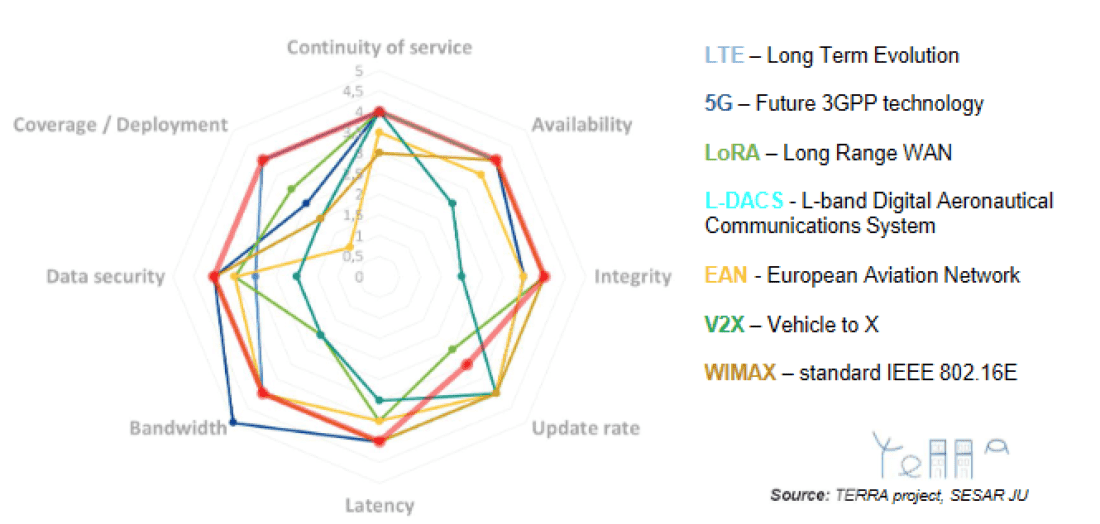UAS Deconfliction: A Strategic Plan
As millions of drones take to the air, how do we keep them from crashing?

The sky’s the limit, as the saying goes. Well, as it turns out, with millions of unmanned aircraft systems (UAS) soon to take to the air for everything from small package delivery to surveillance and military actions, the sky is, in fact, limited.
To prepare, aviation regulators around the globe are setting the stage — and the rules — to avoid catastrophes through a process known as deconfliction. Deconfliction aims not just to detect-and-avoid, but to automatically prevent unmanned aircraft from colliding with each other by planning in advance where the UAS should travel along the way.
The prospect of hundreds of thousands, if not millions, of drones being airborne simultaneously through multiple, often interconnected, regulated airspaces has prompted air transportation agencies, such as NASA, FAA, EASA, ICAO, and others, to begin to address these varying scenarios.
Separation standards
An European collaborative project, the Single European Sky ATM Research Joint Undertaking (SESAR JU), which is led by Eurocontrol and co-funded by the European Commission, is taking the lead in the European Union (EU) to develop and implement these guidelines and regulations.
Drone specificities and their impact on the ATM system will need to consider the dynamic nature of such flights, the effects of scale, the diverse performance ranges of these aircraft, and decide how to integrate their mission impacts (such as package delivery versus emergency services).
Communications, navigation, and surveillance (CNS) technologies will be key to establishing deconfliction protocols, standards, and regulations. They will need to take into account tracking, timing, navigation, monitoring, mission planning, UTM collaboration with ATC/ATM, assured-positioning, navigation, and timing (A-PNT) systems, and of course, the operating environments themselves.
The required performance parameters will require an air-to-ground (A/G) gap analysis for communications technologies that considers the environmental requirements as well as technology performances. This SESAR-JU-developed diagram illustrates the factors under consideration:
Manned Challenges: Man vs. Man (vs. Machines)
Currently, not all users make themselves ‘visible’ to those in their flight path or who may soon enter their flightpath. You can’t avoid what you’re unaware of, so the interoperability of urban traffic management systems (UTM) and the air traffic management (ATM) systems in place will be essential for deconfliction to take place.
Low-level flight rules (LFR) and manned traffic management by UTM in very low-level airspace (VLL) will have to be electronically conspicuous. There will need to be a UTM Traffic Information service that provides situational awareness. And, the submission of an operational declaration/flight plan before departure will need to be mandatory.
Demand and Capacity Balancing
Five things will need to take place for strategic deconfliction to be effective:
- Mission Planning Management
- Flight Planning Management
- Demand and Capacity Planning (capacity characterization and demand prediction)
- Strategic Deconfliction
- Tactical Separation Management
Several factors will facilitate tactical separation management: Situational awareness provided by a tracking, traffic monitoring, and information service; LFR rules that prioritize traffic linked to a given aircraft’s mission (e.g., emergency services vs. commercial vs. recreational); use of current vehicle-to-vehicle (V2V) technologies, but as a safety net, not as the primary arbiter of deconfliction; and, dynamic separation which considers CNS system status, weather conditions, and drone performance.
Expect the Unexpected
Using computer modeling and fast-time simulations, separation standards can be developed that will provide efficient drone services based on airspace and system capacity while keeping safety targets that minimize risk at the forefront of operations. If you plan, you can prepare. If you’re prepared, you will prevail.
Want to continue to stay up-to-date about the latest developments in the eVTOL industry? Subscribe to AeroCar Journal now. It’s FREE (for a limited time)! Join us on Twitter for the latest news, analysis, and insight about the eVTOL industry. AeroCarJ


